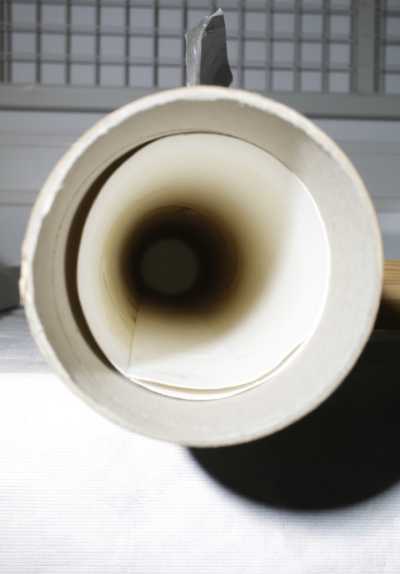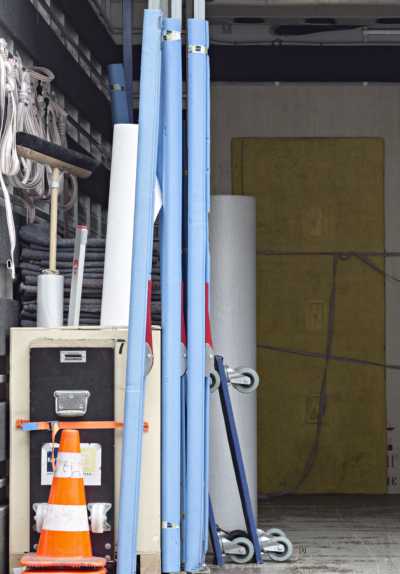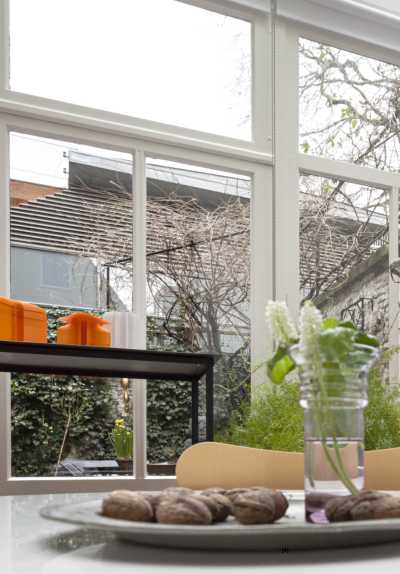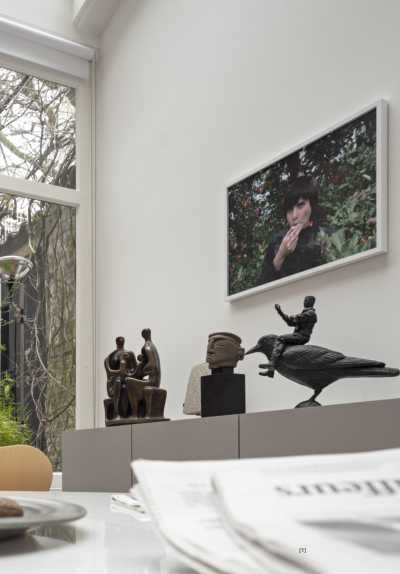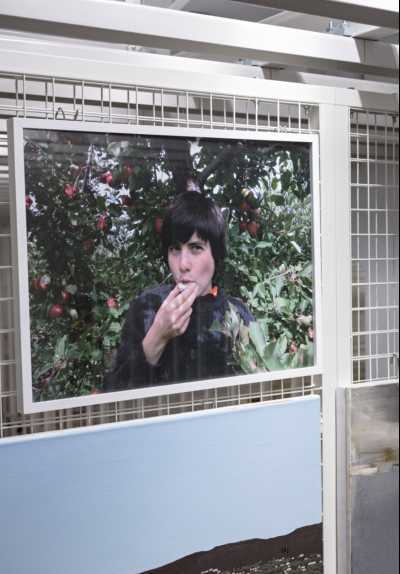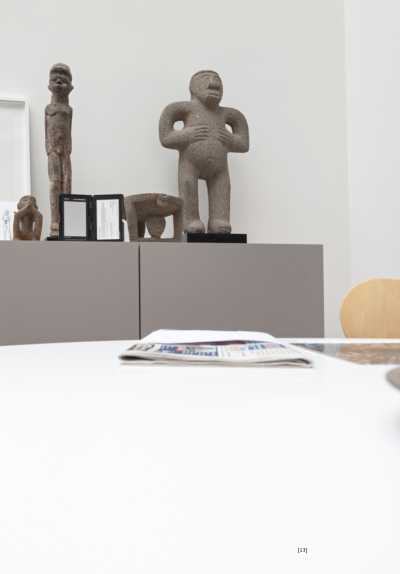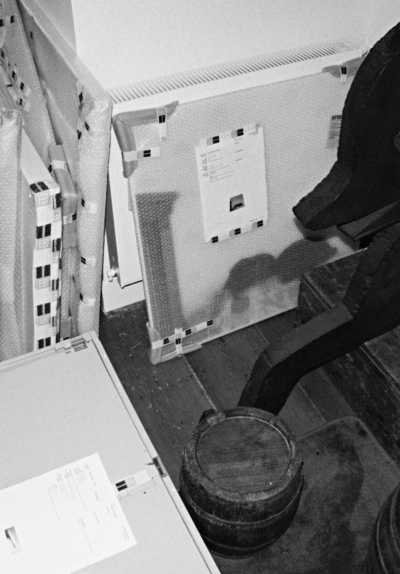Object Onder / Object Below
The title of this book, OBJECT ONDER / OBJECT BELOW, refers to the label the Stedelijk Museum Amsterdam uses in its depot to warn that a covered artwork lies below and thus no objects should be placed on top of it. The title eloquently conveys the nature of this publication: neither a description of the collection, nor a catalogue accompanying the exhibition at the Stedelijk, but a work of art in its own right, inspired and informed by our collection.
This book was motivated by our recent gift to the Stedelijk Museum, and the exhibition that followed. Our gift of artwork reflects our decision to gradually part company with the works we have collected over the years. Just as collecting is inevitable for us, so, too, is leave-taking. All things are transient, memento mori.
This book explores the transformation that artworks undergo when they change context, from a private environment to the world of the museum. And before this, another transformation had taken place, from the studio to our home. To give shape to our ideas, we invited four artists to consider what collecting means to the collector, what art in the home offers the viewer, how art cannot be considered separate from its context, and what it means to gradually say farewell to all those cherished objects gathered over the years. Each of the four artists responded to our invitation in their own uniquely personal way.
We chose Johannes Schwartz because, when photographing art and objects, he pays due respect to the context. We appreciate his sense of materiality, of the physical, as much as his vision of art and its relationship to the space. Schwartz photographed the artworks in our home, our storage depot, and on their subsequent journey to the depot of the Stedelijk Museum. Rather than focusing on the works themselves, Schwartz directed his attention to the changing environment and the empty places that remained after the works had relocated. He took the photographs from the perspective of the viewer, who often observes the art in our home from a seated position. Schwartz pursues this approach in order to make our personal relationship with art visually explicit. Art needs to be seen. His photos are the book’s foundation.
For a designer, we chose Julie Peeters. Her work appeals to us because she has developed a distinctive, idiosyncratic style, with an attention for detail and unexpected associations that elicit surprises. Peeters believes that not only is a book the carrier of ideas, but it must also evoke an emotion that reflects the content. For her, form and content are visually and emotionally intertwined. Together, Julie Peeters and Johannes Schwartz created a compelling visual narrative documenting the odyssey of our artworks.
We also wanted language to play an integral part. Our choice fell on writer and visual artist Cornel Bierens for his witty, associative and visual style of writing that complements Schwartz’s style of photography. Bierens chose one of Schwartz’s photos as the starting point of ‘From the Home to the Museum’, an essay in which he describes the relocation from a domestic to a museum environment from the artworks’ point of view. Like Schwartz, he reveals the extent to which the meaning of an artwork is defined by the context in which it is seen.
Lastly, we invited a poet to share her musings. We asked multi-faceted artist and writer Maria Barnas, curious to discover how, from her personal perspective, she would respond to the artworks that surround us daily, fuelled by her extraordinary powers of observation and poetic sensibility. Maria spent several days roaming through our home, annotating her experiences in ‘Beyond the Images’, a lengthy, contemplative poem on the nature of art, her personal associations with the works themselves, and the introspection that this inspires within her. Many of the objects she describes in her poem are works, which we hung to fill the vacuums left by the relocation to the Stedelijk Museum.
This book is a snapshot from the forty-plus years of our art collecting adventure. It tells of the role that art plays in our life. A role that we explore in greater detail in the interview with Bart Rutten, Anne Ruygt, and Hripsimé Visser, curators at the Stedelijk Museum.
The book ends with a guided tour through our home in the form of personal, reflective texts that accompany a number of photos. Each short text explores a different room, describing our everyday interactions with the works in this space.
Our recent gift to the Stedelijk Museum Amsterdam, and the preceding donation to the Cultural Heritage Agency of the Netherlands (the RCE, formerly the ICN), means that art that may have spent a long time in storage can be seen again, in a different context. You might say that the works have acquired a new life. And we are profoundly grateful to all those who have helped to realize this transformation, and have entered into this fascinating dialogue with us: the directors and staff of the Stedelijk Museum and of the RCE, the artists and all those who contributed to this book. We would like to give a special word of thanks to Masha van Vliet for her support throughout the research, concept development, and text coordination.
This book does not intend to offer a survey of our entire collection. It engages with the artworks themselves, how artists see the world and make visible that which was previously unseen. The collection tells a story: our story. Or, in other words, a story that is more than the sum of the parts; a tale of discoveries, encounters, and pleasures that we have shared, or will share, with many others in the future. These stories are irreplaceable. They are the heart and soul of our collection. An outsider may perhaps be familiar with a handful of stories, and might hazard a guess at others but, for the most part, they remain untold. What endures is what matters most: the art itself.
Authors
Maria Barnas, Cornel Bierens, Beatrix Ruf, Anne Ruygt, Marieke Sanders
Publisher
Verlag der Buchhandlung Walther König, Cologne
Photography
Johannes Schwartz
Graphic design
Julie Peeters
ISBN
978-3-86335-833-4
